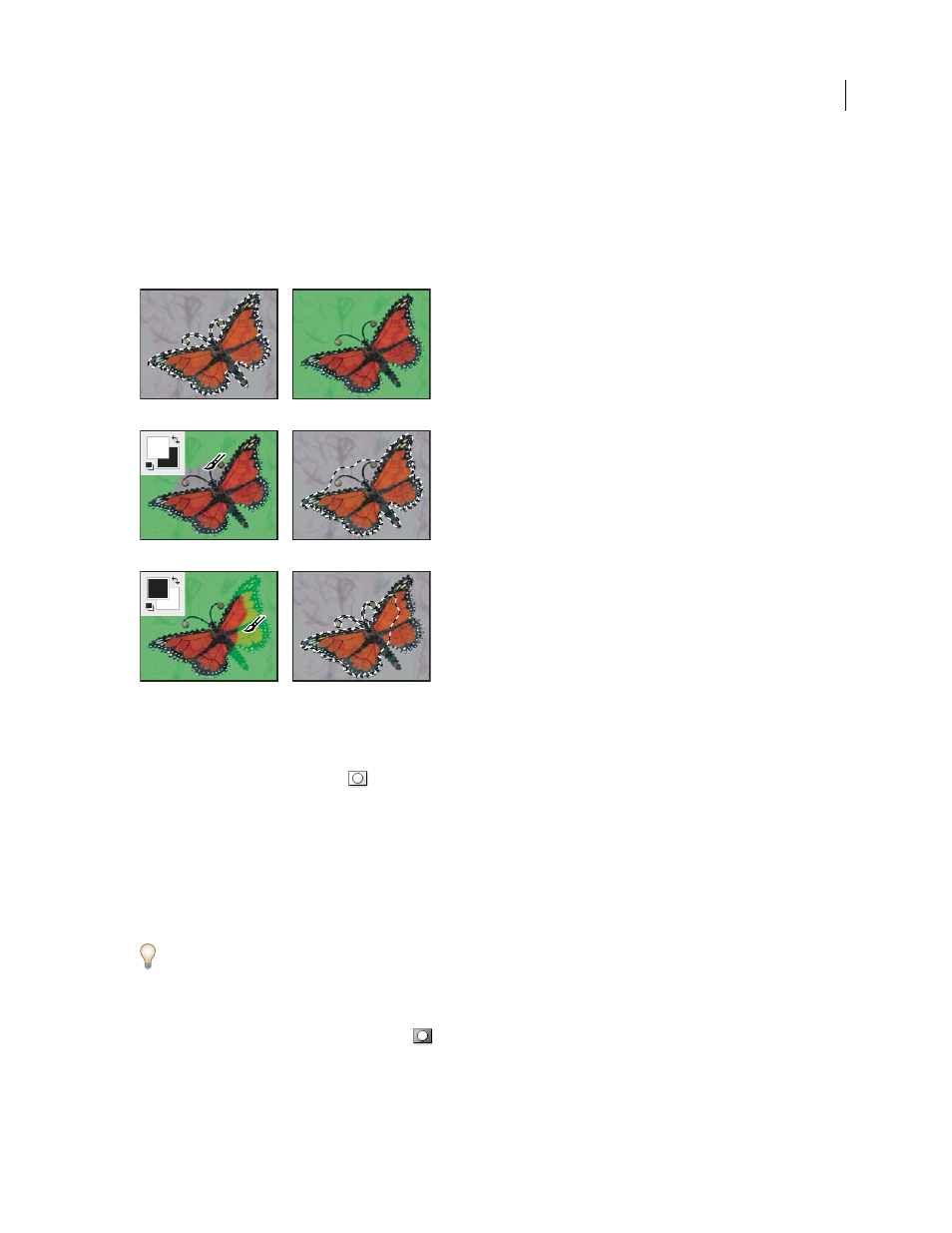Change quick mask options – Adobe Photoshop CS3 User Manual
Page 278

PHOTOSHOP CS3
User Guide
271
3
To edit the mask, select a painting tool from the toolbox. The swatches in the toolbox automatically become black
and white.
4
Paint with white to select more of an image (the color overlay is removed from areas painted with white). To
deselect areas, paint over them with black (the color overlay covers areas painted with black). Painting with gray or
another color creates a semitransparent area, useful for feathering or anti-aliased effects. (Semitransparent areas may
not appear to be selected when you exit Quick Mask Mode, but they are.)
Painting in Quick Mask mode
A. Original selection and Quick Mask mode with green chosen as mask color B. Painting with white in Quick Mask mode adds to the selection
C. Painting with black in Quick Mask mode subtracts from the selection
5
Click the Standard Mode button
in the toolbox to turn off the quick mask and return to your original image.
A selection border now surrounds the unprotected area of the quick mask.
If a feathered mask is converted to a selection, the boundary line runs halfway between the black pixels and the white
pixels of the mask gradient. The selection boundary indicates the transition between pixels that are less than 50%
selected and those that are more than 50% selected.
6
Apply the desired changes to the image. Changes affect only the selected area.
7
Choose Select > Deselect to deselect the selection, or save the selection by choosing Select > Save Selection.
You can convert this temporary mask to a permanent alpha channel by switching to standard mode and choosing
Select > Save Selection.
Change Quick Mask options
1
Double-click the Quick Mask Mode button
in the toolbox.
A
B
C
